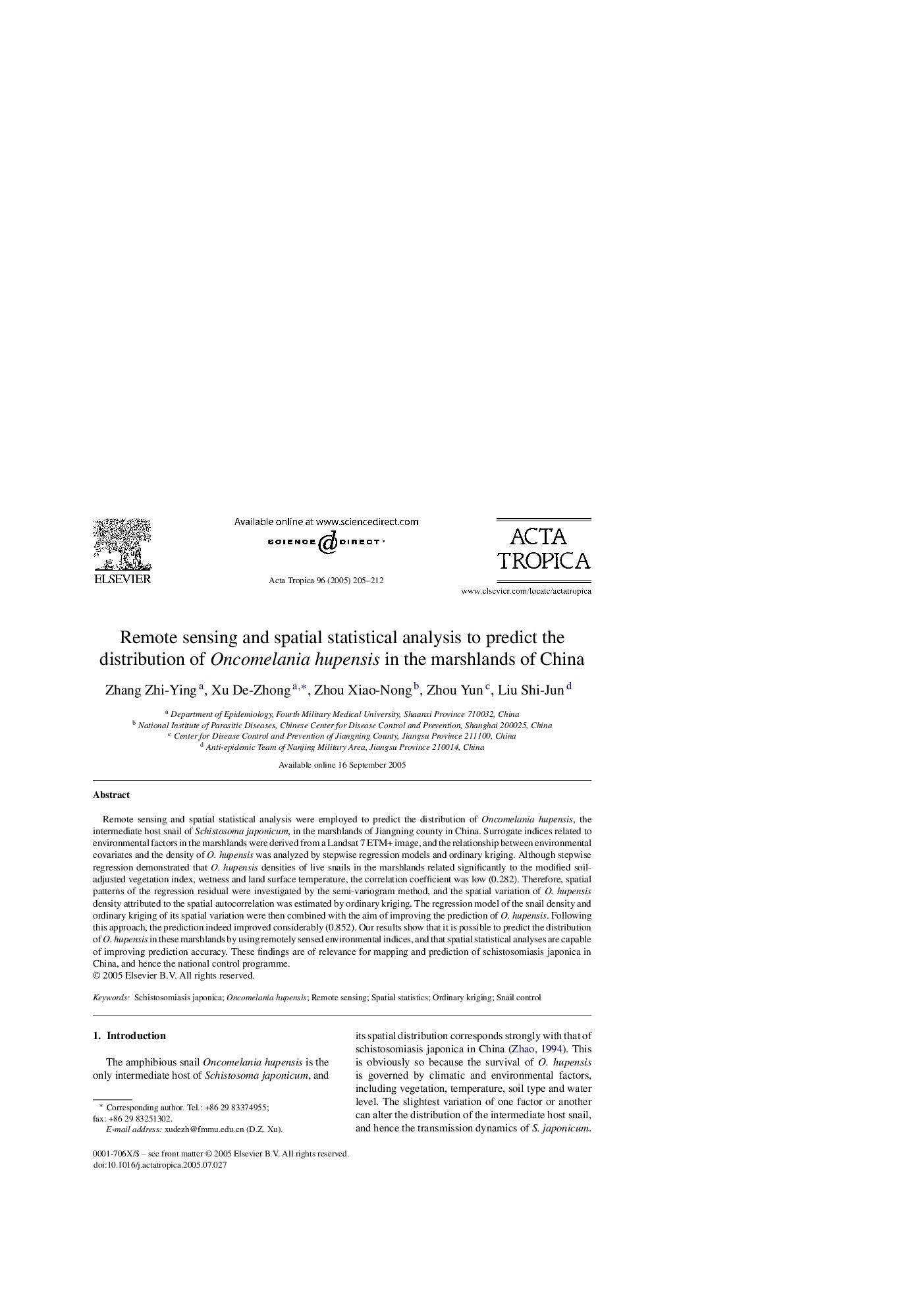| Article ID | Journal | Published Year | Pages | File Type |
|---|---|---|---|---|
| 9274246 | Acta Tropica | 2005 | 8 Pages |
Abstract
Remote sensing and spatial statistical analysis were employed to predict the distribution of Oncomelania hupensis, the intermediate host snail of Schistosoma japonicum, in the marshlands of Jiangning county in China. Surrogate indices related to environmental factors in the marshlands were derived from a Landsat 7 ETM+ image, and the relationship between environmental covariates and the density of O. hupensis was analyzed by stepwise regression models and ordinary kriging. Although stepwise regression demonstrated that O. hupensis densities of live snails in the marshlands related significantly to the modified soil-adjusted vegetation index, wetness and land surface temperature, the correlation coefficient was low (0.282). Therefore, spatial patterns of the regression residual were investigated by the semi-variogram method, and the spatial variation of O. hupensis density attributed to the spatial autocorrelation was estimated by ordinary kriging. The regression model of the snail density and ordinary kriging of its spatial variation were then combined with the aim of improving the prediction of O. hupensis. Following this approach, the prediction indeed improved considerably (0.852). Our results show that it is possible to predict the distribution of O. hupensis in these marshlands by using remotely sensed environmental indices, and that spatial statistical analyses are capable of improving prediction accuracy. These findings are of relevance for mapping and prediction of schistosomiasis japonica in China, and hence the national control programme.
Keywords
Related Topics
Life Sciences
Immunology and Microbiology
Parasitology
Authors
Zhang Zhi-Ying, Xu De-Zhong, Zhou Xiao-Nong, Zhou Yun, Liu Shi-Jun,
